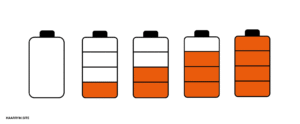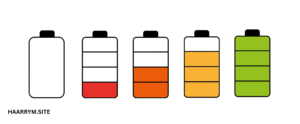Solar energy has evolved into a dependable and sustainable source of electricity in the tech-driven, environmentally concerned society of today. Whether you are a photographer, hiker, camper, or just someone seeking to live off-grid, you have most certainly asked: Can you charge a battery with a camera solar charger?
The quick response is: Yes, you can—but it depends on the kind of battery, the specs of your solar charger, and how you arrange your charging system. Everything you need to know will be walked over in this blog article.
A Camera Solar Charger Is:
A camera solar charger is a little gadget that uses sunshine to generate electricity. It’s mostly meant to either directly or via an intermediary battery pack recharge camera batteries. Travel photographers, outdoor lovers, and those working in far-off regions would find ideal fit for these solar chargers.
Most solar cameras’ chargers include:
-
Ports of USB output
-
Foldable solar energy panels
-
Features of voltage control
-
Lightweight, weather-resistant concepts
The big issue, however, is whether they can also charge other batteries.
Batteries You Might Want to Charge: Types
Knowing the kind of battery you want to charge is very vital before utilizing any solar charger. Various batteries have varying power needs and charge tolerances. These are some typical forms:
-
Camera Batteries: Typically Li-ion (Lithium-ion) with certain voltage ratings (typically 7.2V or 3.6V)
-
AA/AAA Rechargeable Batteries: Usually NiMH or NiCd
-
Power Banks: Li-ion batteries or lithium polymer
-
12V Batteries: Often lead-acid or lithium-based, used in solar power systems and cars
Every one of these batteries needs a certain voltage and charging current, which will define whether a camera solar charger can effectively and securely charge them.
Mechanism of Solar Chargers
Photovoltaic (PV) panels are what solar chargers use to gather sunlight and convert it into electrical power. Either straight or via a charging circuit, this current is then utilized to charge a battery. Here is a simple breakdown:
-
Sunlight loads the solar panel
-
The panel creates DC (direct current) power
-
The charger controls voltage and current to a level of useable value
-
The battery gets electricity and keeps it for future usage
Usually running 5V via USB, most camera solar chargers are compatible with phones, power banks, and smaller Li-ion batteries.
Using a Camera Solar Charger, Could You Charge Other Batteries?
1. Charging Batteries for a Camera: ✅ Indeed, with Regard to the Main Goal
Tailored for this are camera solar chargers. Some versions have built-in chargers or adapters fit for other camera manufacturers (Canon, Nikon, Sony, etc.).
2. Charging USB Devices and Smartphones: ✅ Definitely
With USB connectors, most solar chargers make charging phones, GPS devices, and USB battery packs simple.
3. Conditional Charging AA/AAA Recharges: ⚠️
If your USB battery charger allows NiMH or NiCd cells, you may charge these batteries. The solar charger powers the USB charger, which then manages the appropriate charging profile.
4. Not Advised Charging 12V Batteries Unless Supported: ❌
Many times lacking the voltage and power needed to charge 12V batteries are standard camera solar chargers. One may find either dangerous or ineffective trying to achieve this. Install a 12V output solar panel designed especially with a suitable charge controller.
Look for What in a Camera Solar Charger for Battery Charging?
To optimize compatibility and efficiency, consider the following elements:
1. Voltage and Current Output
Standard USB output voltage and current is 5V. To be sure the mAh (milliampere-hour) value satisfies the specifications of your device, check it.
2. Built-in Power Source
Certain solar chargers have an inbuilt battery bank, which lets you store energy during the day and use gadgets at night.
3. Compatibility with Adapters
See if the charger accepts cables or adapters for the particular battery or device you use.
4. Resistance of the Weather
Search for IP-rated gadgets that will survive outside conditions, particularly if you plan to travel or camp.
5. Solar Panel Effectiveness
Monocrystalline higher-efficiency panels excel in low light and cloudy circumstances.
Advantages of a Camera Solar Charger for Battery Charging
✅ Environmental Friendliness: Uses solar energy
✅ Portability: Lightweight and travelable
✅ Versatility: Designed to charge many USB-powered gadgets
✅ Off-Grid Utility: Perfect for regions without power or for crises
Cons and Restrictions
❌ Slower Charging: Solar charge might take much more time than wall outlets
❌ Restricted Output: Might not accept quick charging or big capacity batteries
❌ Weather Dependent: Days with clouds or rain lower efficiency
❌ Not for Big Batteries: Most cannot manage vehicle or 12V batteries unaltered
Advice for Optimal Solar Battery Charging
-
Use direct sunlight instead of shade
-
At peak hours—10 AM to 2 PM—angle your panel toward the sun
-
Steer clear of charging big batteries; stick to USB-powered or compatible gadgets
-
Charge a power bank first, then use it to charge other gadgets
-
Just connect devices whose rated output match those of the charger to avoid overloading the panel
-
Keep the panel clean; dust and dirt lower solar effectiveness
Top Solar Chargers for Camera Use
These are some well-known models with dependability and compatibility:
-
Goal Zero Nomad 5/10: Rugged and portable with USB output
-
BigBlue 28W Solar Charger: Supports many devices, lightweight and waterproof
-
Anker 21W Dual USB Solar Charger: High-efficiency panels, perfect for photographers
-
Nitecore F4: Four 18650 batteries might be held and charged by this solar-compatible USB charger
Can One Charge a Car Battery with a Camera Solar Charger?
Though it’s a typical question, this is really significant.
No, since a common camera solar charger cannot charge a vehicle battery due to:
-
Car batteries use 12V or higher
-
Solar camera chargers USB output only 5V
-
They lack the amperage and safety precautions for big battery charging
Charging a vehicle or RV battery will call for:
-
A 12V solar panel set with minimum 20 to 50 watts
-
A solar voltage regulating controller
-
Correct wiring and safety fuses
Final Thought: Sure, But Be Aware of the Limitations
So, could you charge a battery with a camera solar charger?
Yes, although only certain kinds of batteries—mostly those that:
-
Charge USB devices with 5V output
-
Provide suitable adapters
-
Fall between low and medium capacity
More demanding batteries like 12V systems or high-capacity lithium packs ask for a bigger solar arrangement especially tailored for those requirements.
Finally
Particularly for outdoor photographers, vacationers, and emergency kits, a camera solar charger may be a great tool for transportable and sustainable energy. Although its capacity is restricted to smaller batteries, it provides a sustainable, quiet, and neat means of remaining off-grid powered.
Understanding the power requirements of your battery and the output of your charger can help you maximize solar technology by conserving energy and therefore lowering your carbon footprint.

